A Beginner's Guide to Cold Brew Coffee
Dive into the distinctive world of cold brew coffee, a refreshing and smooth alternative to traditional brewing methods. As you explore how to make cold brew coffee at home, you'll find it requires a slow steeping process, distinct from hot brewing, allowing the coffee grounds to infuse sweetly into water over hours. The essential cold brew coffee recipe begins with selecting your coffee beans, coarsely ground, to match the ideal cold brew coffee ratio, typically one part coffee to four parts water. Submerge these grounds in water, letting them steep in the fridge for 12 to 24 hours to achieve perfect extraction. After straining the mixture, you'll be rewarded with a rich, concentrated brew ready to be diluted to your preference, offering an enticing invitation to customize with milk, cream, or flavors.
Exploring how each step, from bean choice to brewing time, affects your brew heightens your appreciation and enjoyment, turning coffee making into an artful experience.

Essential Ingredients for Cold Brew
To craft the perfect cold brew coffee, you must start with quality coffee beans. Choose beans that are fresh and ideally single-origin to capture a rich flavor profile. These beans should be coarsely ground to prevent over-extraction, ensuring a smooth, mellow taste that defines a good cold brew coffee recipe.
Water is the next critical ingredient in how to make cold brew coffee at home. It's essential to use clean, filtered water, as impurities can affect the final taste. The cold brew coffee ratio of one part coffee to four parts water is a reliable starting point, allowing for balanced extraction that brings out the coffee's natural sweetness.
For example, when brewing with Colombian beans, you'll notice fruity notes and a silky finish—perfectly illustrating how the choice of beans influences the final cup. Your selection of ingredients can transform your brew, providing a personalized touch to every cold brew coffee concoction.
Consider adding optional flavor enhancers to elevate your cold brew experience. Infusions like vanilla pods, cinnamon sticks, or even citrus peels introduce exciting new dimensions to your cup. These additions steep alongside the coffee grounds, subtly infusing the brew over time with their distinct aromas.
A non-compulsory yet effective addition to your cold brew is a dash of milk or cream. This can soften the brew and create a luxurious texture, enhancing both the richness and flavor. With these ingredients, you'll master how to make a delicious cold brew coffee at home, turning each sip into a pleasurable moment.

Cold Brew Brewing Methods
The immersion method is a straightforward way to brew cold brew coffee. Simply combine coarsely ground coffee and water in a container, stir to ensure saturation, and let it steep in the refrigerator for 12 to 24 hours. During this period, the water slowly pulls out the flavorful compounds from the beans, creating a rich, concentrated brew ready for your enjoyment.
A different approach is the slow drip method, where water is allowed to drip slowly through a bed of coffee grounds. This method requires a specialized cold brew coffee device but yields a cleaner, more nuanced flavor profile. By controlling the drip rate, you have the opportunity to experiment with how the cold brew coffee ratio influences the depth and character of the brew.
To make the most of your cold brew adventures, try experimenting with different cold brew coffee ratios and steeping times. This allows you to discover what combination works best for your palate. Adjusting these variables can reveal a variety of flavor notes buried within the beans, transforming your understanding of what is cold brew coffee.

Step by Step Cold Brew Recipe
Begin your cold brew coffee adventure by selecting your favorite coffee beans and grinding them to a coarse consistency. Place these grounds into a large jar or pitcher. For a solid starting point, use a cold brew coffee ratio of one part coffee to four parts water. This balance helps extract the rich undertones without overpowering the taste, setting the stage for a delightful brew.
Pour cold water over the coffee grounds, ensuring they are fully saturated. Stir the mixture gently to promote even extraction. Cover the jar and let it steep in the refrigerator for 12 to 24 hours. While many believe that longer steeping times result in a bitter brew, there’s a strong case for allowing extended steeping, as it can enhance the body and depth of flavor.
After steeping, strain the mixture using a coffee filter or fine mesh sieve to separate the ground coffee from the liquid. This step leaves you with a clear, flavorful concentrate. At this point, play around with how to make cold brew coffee at home by diluting the concentrate with water, milk, or cream, adapting the brew to your taste preferences and discovering your perfect cup.
Storing Your Cold Brew Coffee
Properly storing your cold brew coffee is essential for maintaining its flavor and freshness. Once you've strained the brew, transfer the concentrate into a clean, airtight container. This prevents contamination and helps preserve the rich flavors crafted during the brewing process. A glass jar with a tight seal works wonderfully, keeping your cold brew ready for whenever you need a refreshing pick-me-up.
Refrigeration plays a crucial role in cold brew storage, keeping the coffee fresh for up to two weeks. Ensure your fridge maintains a consistent temperature to retain the quality of the drink. In the next few years, advancements in home brewing technology could refine preservation techniques, prolonging the shelf life of homemade brews and enhancing your coffee storage options.
If you notice any changes in taste, it’s a sign that your cold brew has reached its peak freshness. Although technically safe to consume beyond this point, its flavors will diminish. Using smaller containers can help manage portions, maintaining the cold brew coffee recipe’s integrity and ensuring you're always enjoying a robust and flavorful cup.

Serving Suggestions for Cold Brew
Enhancing your cold brew coffee experience with creative serving suggestions can transform a simple drink into a gourmet delight. Dilute the concentrate to your preferred strength with water, milk, or a milk alternative such as almond or oat milk. This compositional flexing allows you to personalize the texture and richness of each cup, tailoring the drink as per your liking and showcasing the versatility of cold brew recipes.
For a bolder flavor profile, compare serving your cold brew with traditional iced coffee. Iced coffee, brewed hot and then chilled, often retains more acidity and a sharper taste. Cold brew, in contrast, offers a smooth, low-acidic experience. This comparative analysis highlights the benefits of each choice, helping you decide which best suits your current craving or accompanying meal.
Perhaps the most adventurous approach involves flavor infusions. You might add syrups like vanilla, caramel, or hazelnut, or enhance your cold brew with spices such as cinnamon or cardamom. Such variations not only cater to the curious palate but also provide a distinctive twist. Tailor these suggestions to your taste to elevate your coffee moments into something truly special.
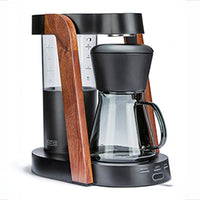 Ratio Eight S2
Ratio Eight S2
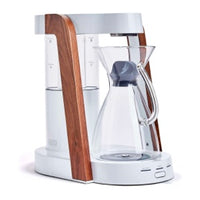 Ratio Eight Original
Ratio Eight Original
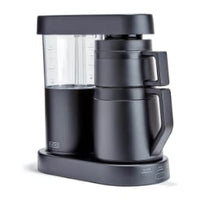 Ratio Six
Ratio Six
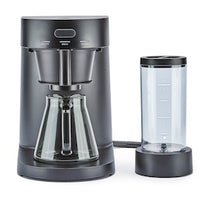 Ratio Four
Ratio Four
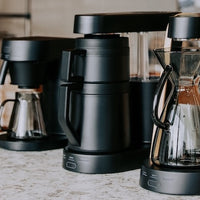 Compare Machines
Compare Machines






